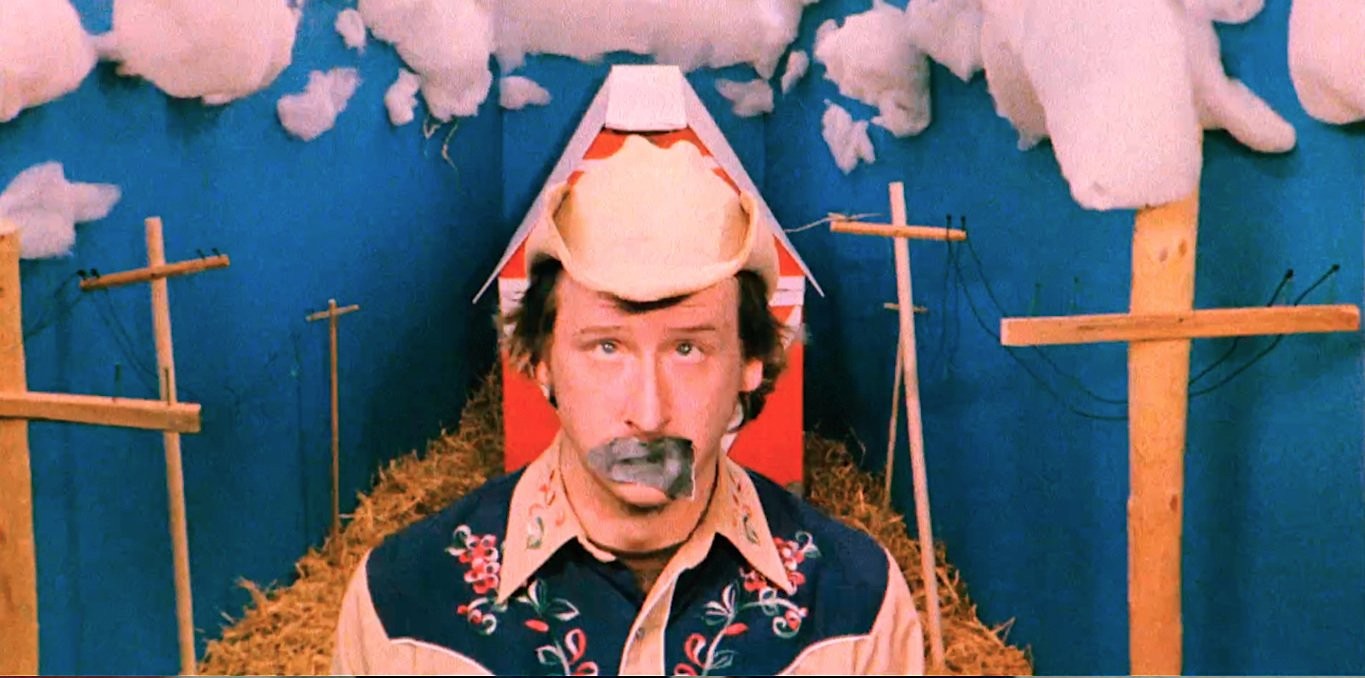Cattle Call

_Cattle Call_ is a high-speed animated documentary about the art of livestock auctioneering. Structured around the mesmerizing talents of 2007 Man-Sask Auctioneer Champion, Tim Dowler, and using a variety of classic and avant-garde animation techniques, filmmakers Maryniuk and Rankin have tried to create images as dazzlingly abstract, absurd and adrenalizing as the incredible language of auctioneering itself. It is our hope that the film will induce near-bovine levels of dumbfoundedness in all those who gaze upon it.
| Directors | Matthew Rankin, Matthew Rankin, Mike Maryniuk, Mike Maryniuk |
| Actor | Winnipeg Film Group |
| Share on |
In 1976, Werner Herzog shared his fascinated horror at the mercantile, frenzied chant shouted by cattle auctioneers in How Much Wood Would a Woodchuck Chuck. He claimed that this incomprehensible language was a bastion of poetry under the aegis of capitalism. Thirty years later, Matthew Rankin and Mike Maryniuk turned their attention to this relatively niche phenomenon. The duo managed to transfigure this poetry, highlighting its absurdity through the codes of experimental cinema, transporting us into this circus of rural America.
Cattle Call is a generous short film that multiplies its techniques to the point of near-sensory saturation. An indecipherable psalm of numbers rings out over a banjo tune, a child keeps time for a dance with a cow, while cowboys chew on hay. One almost feels like they’re in an agrarian Wall Street. The rhythm is slapstick, like the sound design, revealing the venal madness of the auctions in a lighthearted tone. In this formalist exercise, we recognize the playful spirit that would later be associated with Matthew Rankin, his obsessive relationship to kitsch, which nevertheless manages to delight under the guise of infomercial-style embrace.
The resulting synesthesia is the product of bricolage: cardboard sets and the use of paper, which, when placed over mouths, evoke a collage aesthetic. Both maximalist and lo-fi, the duo employs stop-motion to chop up time. This technique, in addition to contributing to the rhythm, reinforces the film’s handmade, crumpled-paper aesthetic and cardboard dimension, as does the dizzying appearance of numbers, words, and currency symbols in a country-style typeface.
Cattle Call is pure comedic chaos that strips the Western aesthetic of its usual gloom.
Mélopée B. Montminy
Programmer
Montreal's Critics' Week

-

Français
4 mn
Language: Français
Subtitles: Français -

English
4 mn
Language: English
Subtitles: English
- Année 2008
- Pays Canada
- Durée 4
- Producteur Matthew Rankin
- Langue English
- Sous-titres French
- Résumé court A short animated documentary about the art of cattle auctions, inspired by Canadian champion Tim Dowler.
- Mention festival Meilleur court métrage expérimental · SXSW 2009
- Ordre 2
- TLF_Applismb_CA 1
- Date édito CA 2025-11-07
In 1976, Werner Herzog shared his fascinated horror at the mercantile, frenzied chant shouted by cattle auctioneers in How Much Wood Would a Woodchuck Chuck. He claimed that this incomprehensible language was a bastion of poetry under the aegis of capitalism. Thirty years later, Matthew Rankin and Mike Maryniuk turned their attention to this relatively niche phenomenon. The duo managed to transfigure this poetry, highlighting its absurdity through the codes of experimental cinema, transporting us into this circus of rural America.
Cattle Call is a generous short film that multiplies its techniques to the point of near-sensory saturation. An indecipherable psalm of numbers rings out over a banjo tune, a child keeps time for a dance with a cow, while cowboys chew on hay. One almost feels like they’re in an agrarian Wall Street. The rhythm is slapstick, like the sound design, revealing the venal madness of the auctions in a lighthearted tone. In this formalist exercise, we recognize the playful spirit that would later be associated with Matthew Rankin, his obsessive relationship to kitsch, which nevertheless manages to delight under the guise of infomercial-style embrace.
The resulting synesthesia is the product of bricolage: cardboard sets and the use of paper, which, when placed over mouths, evoke a collage aesthetic. Both maximalist and lo-fi, the duo employs stop-motion to chop up time. This technique, in addition to contributing to the rhythm, reinforces the film’s handmade, crumpled-paper aesthetic and cardboard dimension, as does the dizzying appearance of numbers, words, and currency symbols in a country-style typeface.
Cattle Call is pure comedic chaos that strips the Western aesthetic of its usual gloom.
Mélopée B. Montminy
Programmer
Montreal's Critics' Week
-

Français
Duration: 4 minutesLanguage: Français
Subtitles: Français4 mn -

English
Duration: 4 minutesLanguage: English
Subtitles: English4 mn
- Année 2008
- Pays Canada
- Durée 4
- Producteur Matthew Rankin
- Langue English
- Sous-titres French
- Résumé court A short animated documentary about the art of cattle auctions, inspired by Canadian champion Tim Dowler.
- Mention festival Meilleur court métrage expérimental · SXSW 2009
- Ordre 2
- TLF_Applismb_CA 1
- Date édito CA 2025-11-07
